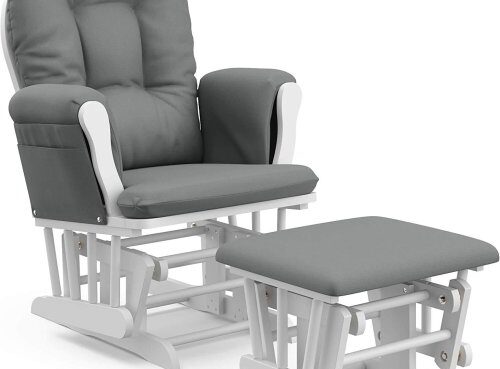In our constantly-connected world, it’s easy to let electronics take over our lives. We feel the need to be available 24/7, and we’re constantly bombarded with notifications and alerts. It’s no wonder that so many of us feel overwhelmed and stressed out.
There is a solution, however: digital decluttering. By taking some time to streamline our electronic devices and systems, we can regain control of our lives and improve our productivity and mental well-being.
Here are some step-by-step digital decluttering techniques that you can use to get started:
1. Start with your email inbox. Unsubscribe from any newsletters or mailing lists that you don’t read or that no longer interest you. Delete any old emails that you no longer need. Create folders for different types of emails, and set up filters to automatically sort new emails into the appropriate folders.
2. Take a look at your social media accounts. Unfollow any accounts that make you feel anxious or negative. Limit the amount of time you spend on social media each day.
3. Go through your files and folders. Delete any old files that you no longer need. Organize your remaining files into
1. The average person has over 5,000 photos stored on their phone
According to a study done by Mylio, the average person has over 5,000 photos stored on their phone. That’s a lot of visual clutter to sort through every time you want to find a specific picture! So what can you do to declutter your photo collection and regain control?
Here are a few tips:
First, take some time to go through all of the photos on your phone and delete any that you don’t need. This may seem like a daunting task, but it will be worth it in the end.
Next, create a system for organizing your photos. This could involve creating folders for different topics or using a program like Google Photos to help you organize.
Finally, make sure to back up your photos regularly. This way, even if you accidentally delete a photo, you’ll still have a copy stored elsewhere.
By following these steps, you can declutter your photo collection and regain control of your digital life.
2. The average person checks their phone 46 times per day
The average person checks their phone 46 times per day, which can be a huge drain on productivity and mental well-being. Here are some tips to help you regain control of your phone usage and declutter your digital life:
1. Set specific times for phone usage
Decide on specific times when you will allow yourself to use your phone. This could be first thing in the morning, during your lunch break, and in the evening before bed. Outside of these times, put your phone away and resist the urge to check it.
2. Keep your phone out of sight
If your phone is constantly within reach, you’ll be more likely to pick it up and start scrolling mindlessly. So keep it out of sight and out of mind by putting it in a drawer or another room.
3. Delete unnecessary apps
If there are apps on your phone that you never use, get rid of them! Having too many apps can be overwhelming and make it difficult to find the ones you actually need.
4. Turn off notifications
All those little beeps and buzzes can be extremely distracting. If you don’t need to be notified of every new email or social media post, disable those notifications.
5. Set limits on social media
Social media can be a huge time-suck. If you find yourself scrolling through your feed for hours, try setting a limit of 10-15 minutes per day.
By following these tips, you can take back control of your phone usage and declutter your digital life.
3. 80% of people say they spend too much time on their phone
How many times a day do you check your phone? Once? Twice? More? A recent study shows that the average person checks their phone 80 times a day. That’s a lot of time spent staring at a screen!
If you feel like you’re spending too much time on your phone, you’re not alone. 80% of people say they spend too much time on their phone, and most people want to cut back.
So how can you cut back on screen time and regain control of your time? Here are a few tips:
1. Set limits
One way to cut back on screen time is to set limits for yourself. Decide how much time you want to spend on your phone each day, and then stick to that limit.
2. Find other things to do
When you’re not on your phone, what do you do? Find other things to do that you enjoy, and make sure to include some screen-free activities.
3. Keep track of your time
You may be surprised at how much time you actually spend on your phone. Keep track of your screen time for a week, and then see where you can cut back.
4. Take breaks
If you find yourself spending a lot of time on your phone, take breaks throughout the day to give your eyes and mind a rest.
5. Be mindful
When you are on your phone, be mindful of what you’re doing. Are you using your time in a way that makes you happy? If not, it may be time to cut back.
Cutting back on phone time can be difficult, but it’s worth it. You’ll be more productive, and you’ll likely find that you have more free time. So try these tips and take back control of your time!
4. 41% of people say their phone use has caused them to lose sleep
The average person spends 3 hours and 15 minutes on their phone every day. That’s a lot of time! And it’s no wonder that 41% of people say their phone use has caused them to lose sleep.
If you’re one of those people, don’t worry, there are ways to regain control and get your sleep schedule back on track. Below are some step-by-step digital decluttering techniques to help you improve productivity and mental well-being.
1. Schedule phone-free time: One way to cut down on phone use is to schedule phone-free time. For example, you can set a rule that you won’t use your phone after 9pm. This will help you Wind down before bed and avoid scrolling through social media or checking email right before you trying to sleep.
2. Keep your phone out of reach: Another way to limit phone use is to keep it out of reach. For example, if you have a tendency to reach for your phone first thing in the morning, try keeping it in another room or on a high shelf. This way, you’re less likely to use it when you first wake up.
3. Delete social media apps: If social media is eating up a lot of your time, consider deleting the apps from your phone. You can always re-download them later if you want, but this will help you avoid the temptation to scroll through your feed.
4. Limit notifications: Another way to avoid getting sucked into your phone is to limit notifications. For example, you can turn off notifications for certain apps or silence your phone at night. This way, you’re not constantly being bombarded with alerts and you can control when you want to check your phone.
5. Use an app blocker: If you’re struggling to limit your phone use, there are a number of app blockers that can help. These blockers allow you to set limits on how much time you can spend on certain apps or websites. Once you hit your limit, the app will be blocked for the rest of the day.
By following these steps, you can take back control of your time and get your sleep schedule back on track. So, if you’re looking to improve productivity and mental well-being, give digital decluttering a try.
5. 67% of people say their phone use has interfered with face-to-face interactions
We’ve all been there – you’re in the middle of a conversation with someone when you hear the notification ding of a text message or email coming in on your phone. 67% of people surveyed say that phone use has interfered with face-to-face interactions, according to a study by the Pew Research Center.
It can be tough to stay present and not get distracted by our phones, especially when we feel like we might be missing out on something important. But being fully present in the moment is crucial for maintaining healthy relationships and connections with others.
Here are a few tips to help you stay present and avoid phone interference in face-to-face interactions:
1. Put your phone away.
This one might seem obvious, but it’s important to physically remove your phone from the vicinity when you’re trying to have a conversation with someone. If your phone is within reach, it’s going to be temptingly easy to check it, even if you’re not consciously thinking about it.
2. Turn off notifications.
If you can’t or don’t want to put your phone away, at least turn off notifications so you’re not constantly being bombarded with alerts. That way, you can choose when to check your phone instead of feeling like you have to respond to every notification as soon as it comes in.
3. Be in the moment.
When you’re talking to someone, really try to focus on the conversation and be present in the moment. Listen actively, ask follow-up questions, and give the other person your full attention. If your mind starts to wander, gently bring it back to the conversation.
4. Connect with the other person.
Make eye contact, smile, and use other nonverbal cues to show that you’re engaged in the conversation. Showing genuine interest and concern will help you connect with the other person on a deeper level, making the conversation more meaningful.
5. Don’t be afraid to unplug.
It’s okay to take a break from your phone – you don’t always have to be connected. In fact, some quality time offline can be really beneficial for your mental health. If you’re finding it difficult to stay present, try taking a digital detox for a day or even just an hour. You might be surprised at how much better you feel.
Although digital decluttering may seem like a daunting task, it is worth the effort to regain control over your digital life. By following the step-by-step techniques outlined in this article, you can improve your productivity and mental well-being.

